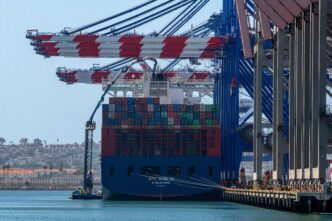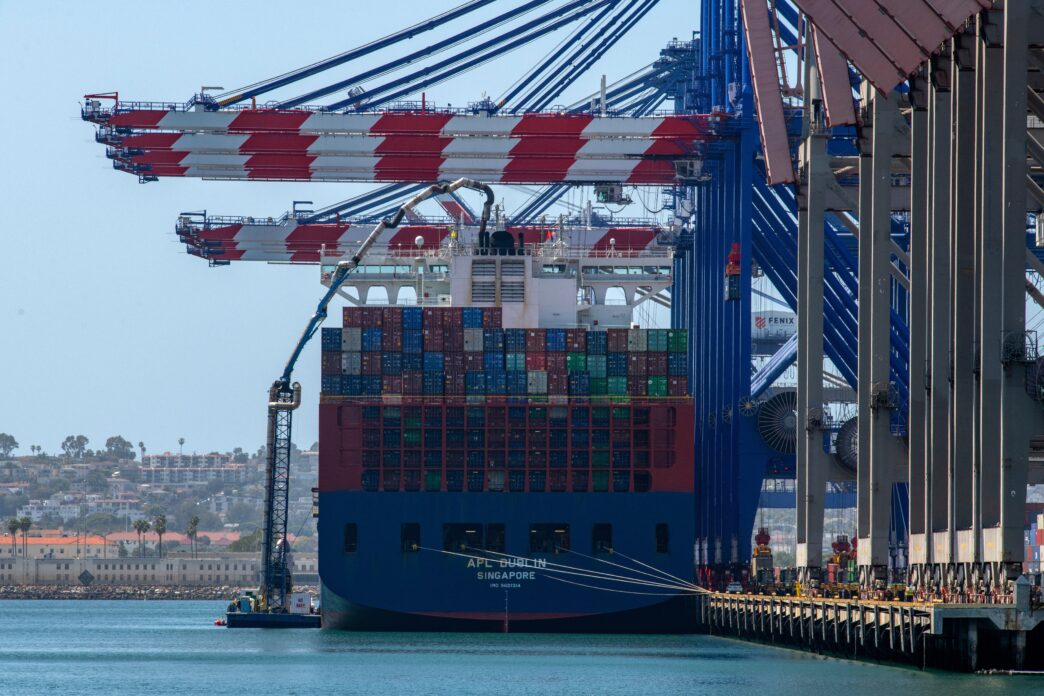Executive Summary
The Story So Far
Why This Matters
Who Thinks What?
The global trade system has demonstrated resilience despite significant disruption caused by U.S. import tariffs, according to Ngozi Okonjo-Iweala, Director-General of the World Trade Organization (WTO). Speaking on Tuesday at the Future Investment Initiative in Saudi Arabia, Okonjo-Iweala’s comments precede a crucial meeting this week between President Donald Trump and Chinese President Xi Jinping, where discussions on reducing trade duties are anticipated.
Trade System Resilience Amid Disruptions
Okonjo-Iweala acknowledged that U.S. unilateral actions had caused “the greatest disruption of global trade in 80 years.” However, she emphasized the system’s ability to withstand these pressures, stating, “The system is battered, it’s bruised, but it’s still standing.” This assessment counters the impression held by many that global trade is fundamentally broken.
Her remarks align with President Trump’s ongoing tour of Asia, during which he has engaged in trade negotiations. President Trump expressed optimism on Monday, suggesting that Washington and Beijing were poised to “come away with” a trade deal, a sentiment that has reportedly boosted market hopes.
The WTO Director-General voiced her hope for a positive outcome from the meeting between President Trump and President Xi. She warned that any “threat of disconnect and conflict” or “fragmentation” into two global trading camps would be detrimental to both countries and the world, potentially leading to significant losses in global welfare, particularly impacting poorer nations.
Revised Trade Forecasts and Contributing Factors
Earlier in October, the WTO revised its global trade growth forecasts. While the organization significantly hiked its projection for 2025 trade volume growth to 2.4% from a previous estimate of 0.9%, the outlook for 2026 was downgraded sharply. The forecast for 2026 was cut to a modest 0.5% growth from an earlier expectation of 1.8%, citing a cooling global economy and the persistent impact of higher tariffs.
Trade tariffs have emerged as a dominant feature and headwind in global commerce since President Trump introduced a widespread tariff regime in April. Even allied nations, such as the U.K., have faced baseline tariffs on goods exported to the U.S.
Drivers of Trade Expansion
Despite these challenges, global trade volumes experienced a robust 4.9% year-on-year increase in the first half of 2025. This expansion was attributed to several factors, including the front-loading of imports into the U.S. in anticipation of higher tariffs, and favorable macroeconomic conditions characterized by disinflation, supportive fiscal policies, and tight labor markets that boosted real incomes and spending in major economies.
Strong growth in emerging markets also contributed to the trade surge. Additionally, increased demand for artificial intelligence (AI)-related goods, such as semiconductors, servers, and telecommunications equipment, played a significant role. AI-related spending alone drove nearly half of the overall trade expansion in the first half of the year, growing 20% year-on-year in value terms.
The WTO noted the intensifying global competition in developing AI-related products. While the U.S. accounted for approximately one-fifth of global AI-related trade growth in the first half of 2025, Asia was the primary driver, contributing nearly two-thirds of the global expansion in this sector during the same period.
Outlook
In summary, while the global trade framework has endured considerable pressure from U.S. tariffs, its underlying resilience is apparent. The outcomes of ongoing high-level trade negotiations and the evolving landscape of technological demand, particularly in AI, are expected to significantly shape future global commerce.








